Written by Taylor Fisk Henning
Myths and fairy tales are two different types of stories that share a tradition of being passed down orally through many generations. Because of this oral tradition and the diffusion of tales throughout time, there are countless variants of the same stories in many different lands and cultures. In most cases, these stories were not recorded until centuries after they were first told. At that point, they became standardized to the extent that aspects of certain versions were favored over others in each culture. The Rare Book & Manuscript Library is home to several examples of recorded myths and fairy tales from Germanic origin. These items are useful in examining the characteristics of myths and fairy tales, how these stories differ, and how they have evolved over time.
A short history of Germanic mythology:
The term “Germanic” refers to the peoples of the ethnic group of ancient Europe identified by their use of the Germanic languages. In ancient times, Germanic tribes were spread all over northern Europe and lived in what we now know as England, Sweden, Norway, Denmark, Iceland, Germany, Austria, Switzerland, Northern Italy, the Netherlands, Belgium, and France. For this reason, Germanic mythology is synonymous with Norse mythology.
The main sources of Norse mythology are the Prose and Poetic Eddas. These literary works were written down in Iceland during the 13th century. The Prose Edda (shown below) contains mythological stories and is a manual of poetics. It was written by the Icelandic scholar and historian Snorri Sturluson around 1220. This version contains parallel text in Icelandic and Swedish with Latin text beneath.
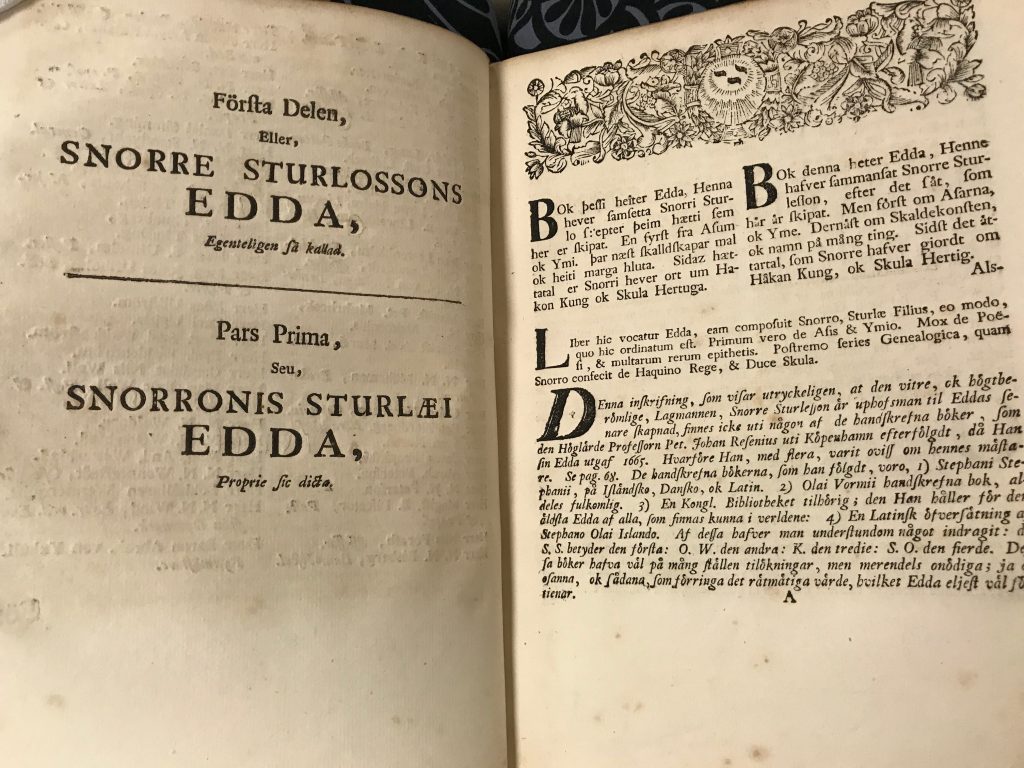
The Poetic Edda or Elder Edda is a collection of Old Norse poems from the Icelandic medieval manuscript Codex Regius. There are multiple versions, but the poems generally tell of the creation, destruction, and rebirth of the Old Norse mythological world. It also contains individual myths about gods and Norse heroes and heroines such as Sigurd, Brynhildr, and Gunnar. Below is an English translation of the Poetic Edda from our collection.
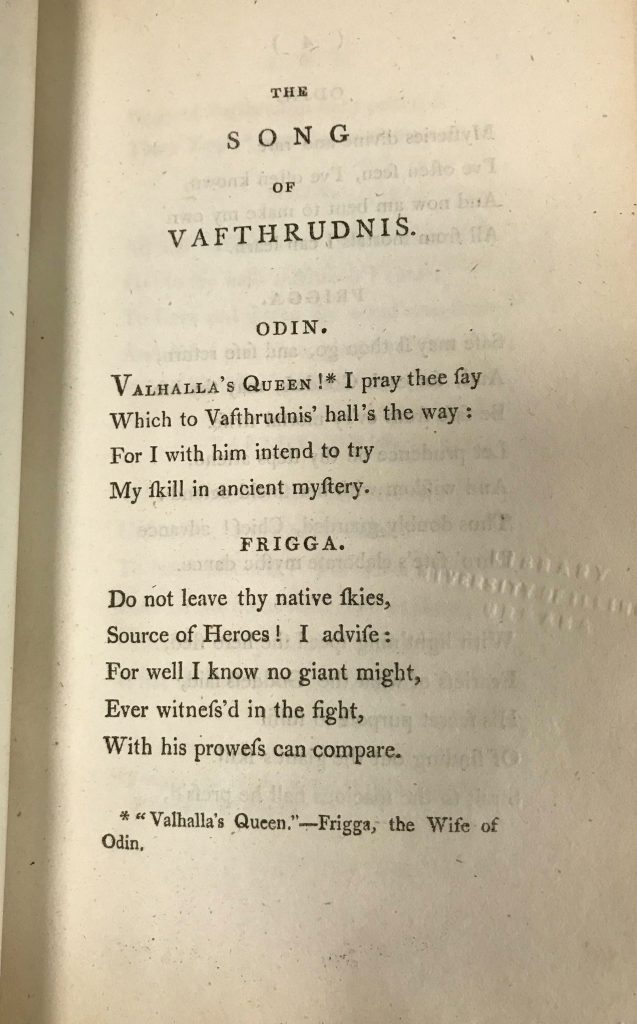
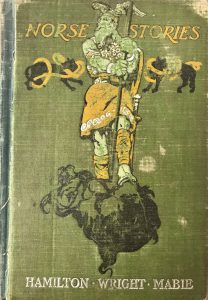
Norse mythology mostly stems from the Eddas, but the stories are retold in many different ways. Myths are sometimes rooted in history but they more often deal with supernatural beings and gods. Their primary purpose was to explain natural phenomena, such as the weather or natural disasters, and they communicate the cultural and religious views of ancient Northern Europe who believed the myths to be true.
The Nibelungenlied or The Song of the Nibelungs is an epic poem from around 1200 written in Middle High German. Like the ancient myths, the Nibelungenlied is based on an oral tradition that has some of its origins in historic events and the mythology of German-speaking Europe. It tells the story of Siegfried, Kriemhild, and Brünhild, figures that also appear in Germanic/Norse mythology, and there are parallels to the Nibelungenlied and the Poetic Edda. Below is a facsimile of Das Nibelungenlied Manuscript C from the Fürstenberg Court Library in Donaueschingen, Germany accompanied by a complete transcription of the German text from the manuscript.
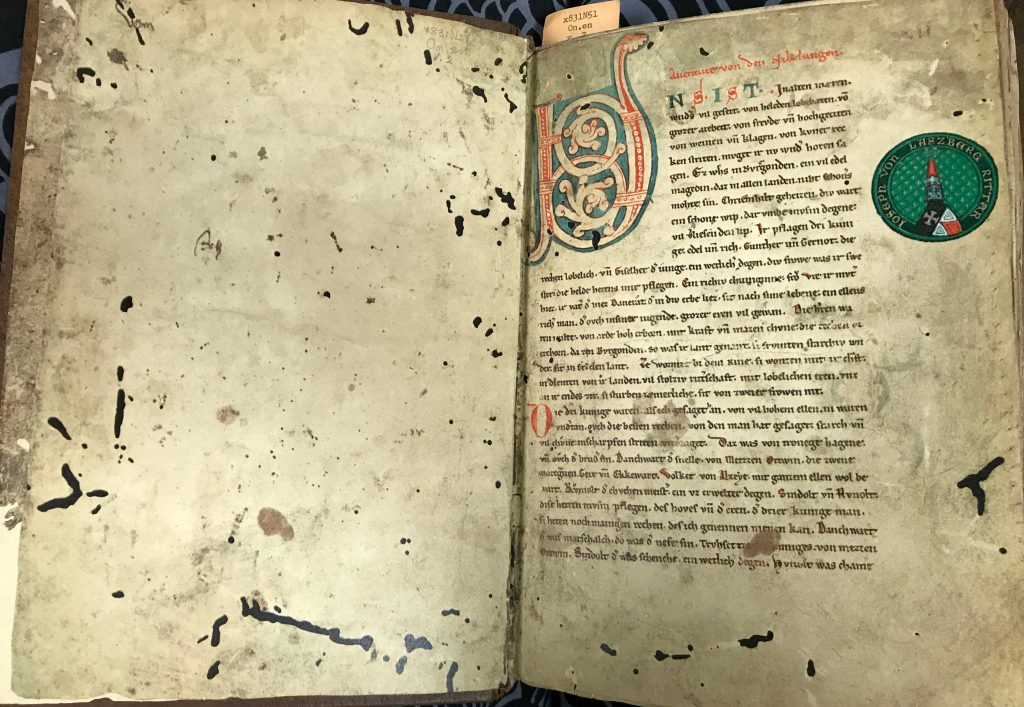
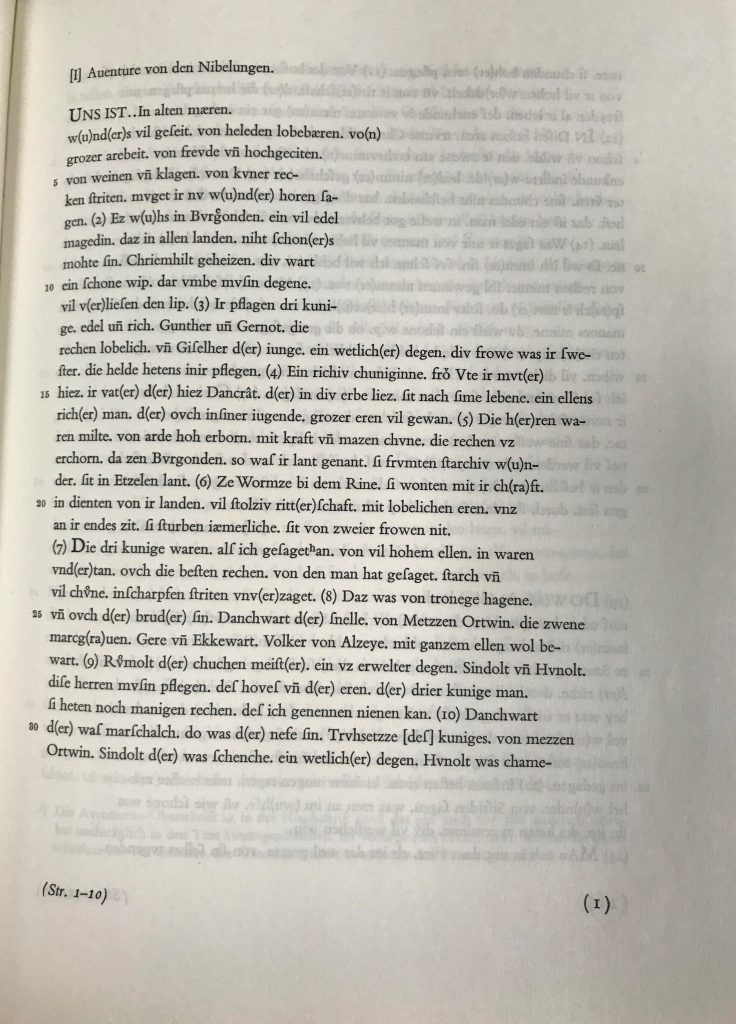
Here is an interpretation of the Nibelungenlied in English translation with some really interesting modern illustrations.
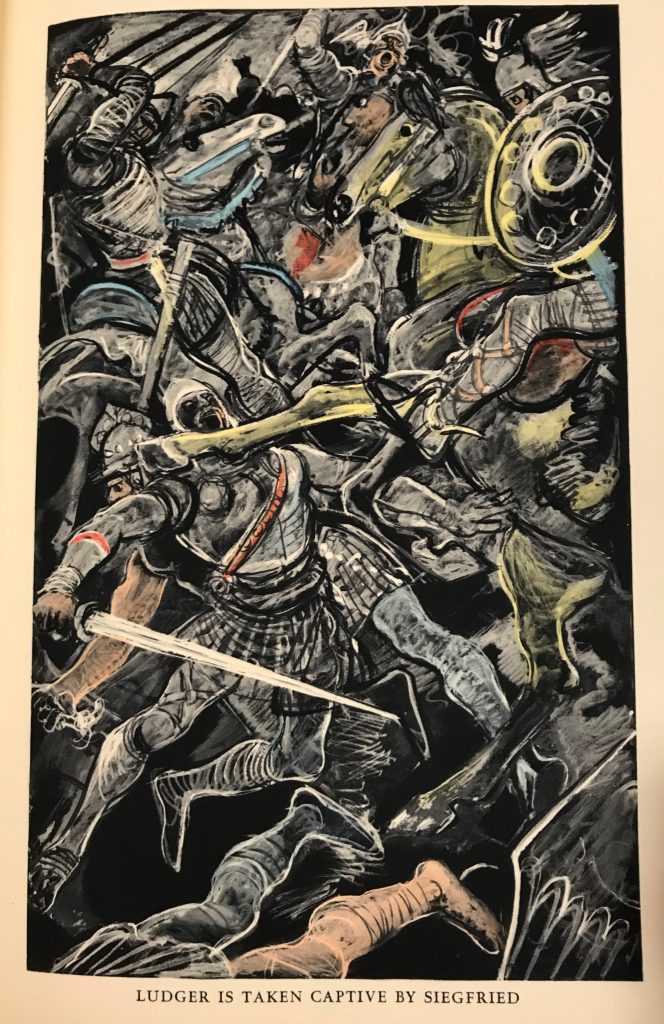
German fairy tales:
Like myths, fairy or household tales were told orally for hundreds or even thousands of years before they were recorded. There were therefore many different versions of the same stories. They may be as old as the ancient myths or older. Although fairy tales share similarities with myths, there are many differences. Fairy tales usually have some sort of fantastic element and feature magic, imaginary creatures, and often a conflict between good and evil. They are not religious tales and are not used to explain natural phenomenon. They often begin with “Once upon a time…” and usually have a happy ending. There is sometimes, though, not always, a moral to the tale. Common motifs of fairy tales include magic numbers such as three, seven, and twelve, journeys where the main character has to overcome obstacles, transformation into animals, speaking animals and things, wishes, abandoned and orphaned children, the youngest child saving their siblings, jealous siblings and stepmothers, and punishment for wrong deeds/reward for good deeds.
Jacob and Wilhelm Grimm scientifically collected hundreds of household or fairy tales and published their first edition of Children’s and Household Tales (Kinder- und Hausmaerchen) in 1812. The first volumes received criticism because although they were called “Children’s Tales,” they were not suitable for children. Many changes through the editions were made to make the stories more appropriate for children. For example, wicked mothers became wicked stepmothers and sexual references such as pregnancy were removed. Below is an 1858 edition of the Grimm brothers’ Kinder- und Hausmaerchen. It is one of the later “small editions” that they published especially for children.
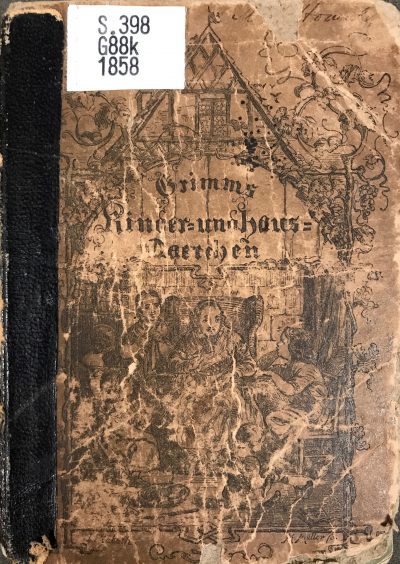
We also have a four-volume set of the modern complete collection of the fairy tales collected by the Brothers Grimm in English translation in our collection. Below is the illustration that accompanies the story “Cinderella.” Many changes have been made from the Grimm story to the Disney version of the tale. In the Grimm version, the prince realizes neither of Cinderella’s stepsisters is the woman he is looking for when their feet bleed from forcing on the glass slipper. At Cinderella’s wedding at the end of the story, pigeons pick the stepsisters’ eyes out for their wickedness and falsehood. This is just one example of the modern sanitizing of the fairy tales.
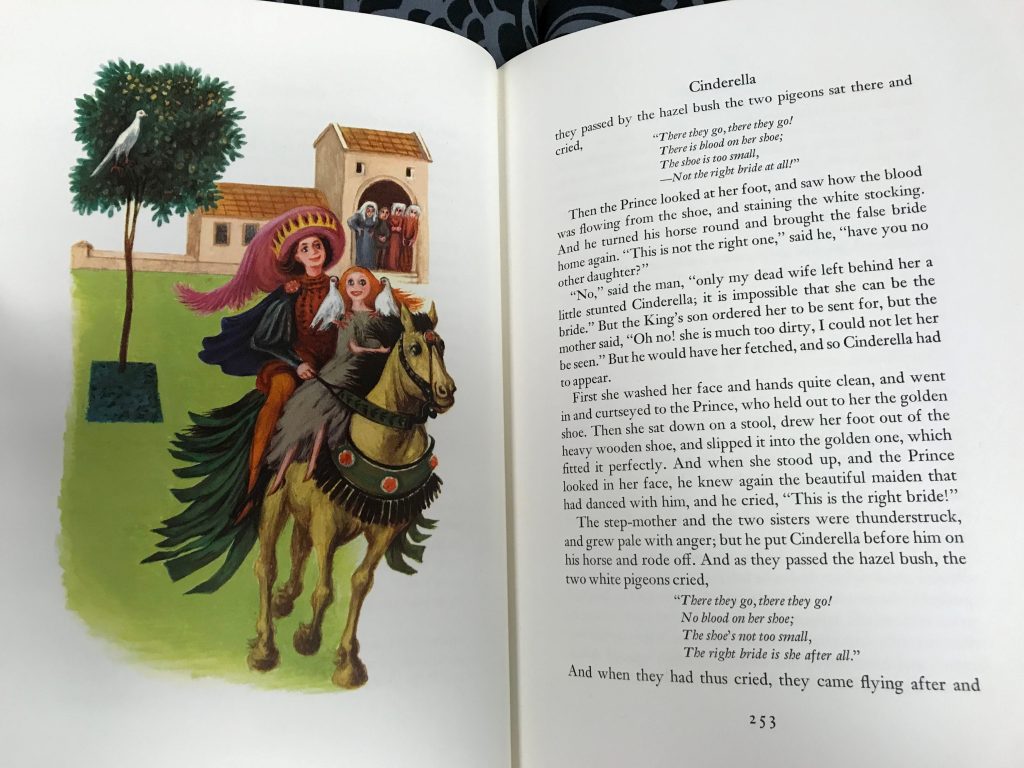
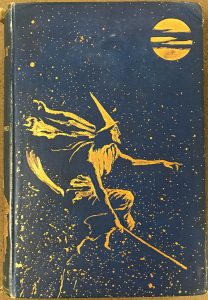
Here is a first edition of folklorist Andrew Lang’s Blue Fairy Book. Lang published 25 collections of fairy tales for children from 1889 and 1913 featuring hundreds of stories from many sources, including the Grimm tales. Lang gave many of these tales their first translation in English and helped change the public perception of fairy tales as he further removed the brutality from the stories to make them more suitable for children. You can see this in the difference between “Cinderella” in the Grimm collection and Lang’s version, in which Cinderella forgives her sisters, invites them to live in the palace, and matches them with lords to marry.
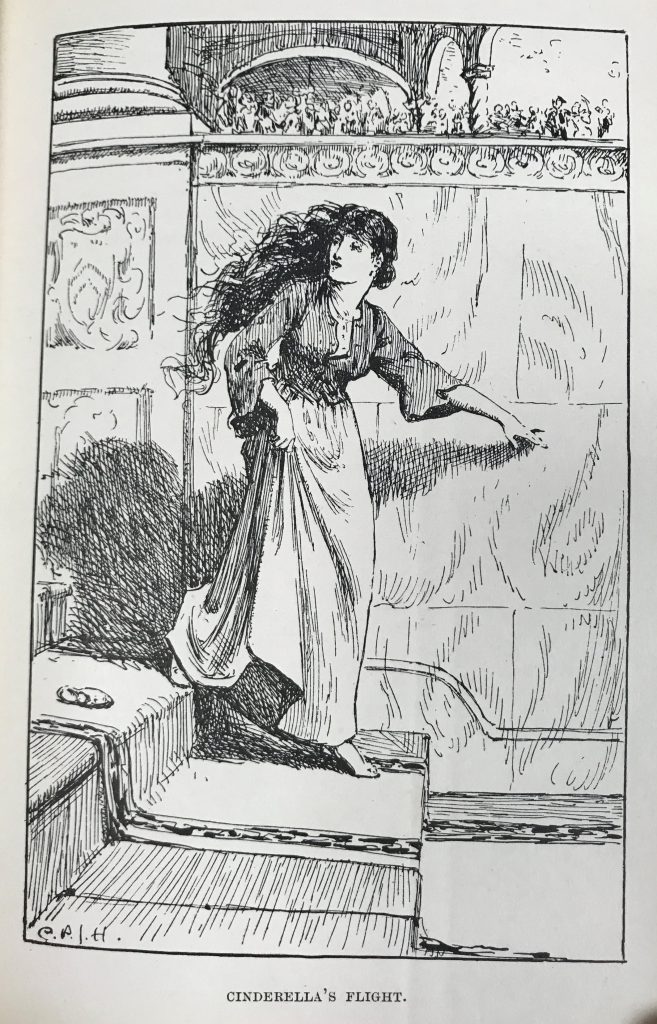
Below are some modern retellings of the Grimm tales. This beautifully illustrated translation of “Hansel and Gretel” is quite true to the Grimm version.
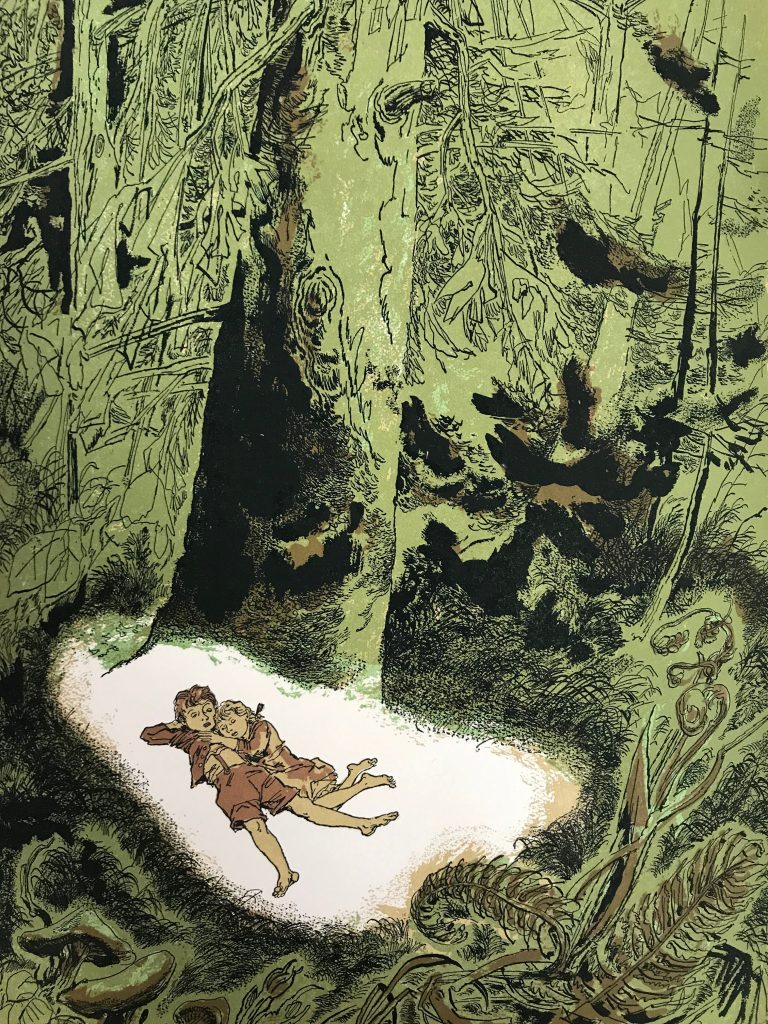
The Grimm household tales have been continually edited since they were written and collected. The popular and well-known Disney versions of these stories have further removed brutality in the tales that may not be considered appropriate for children to modern standards.
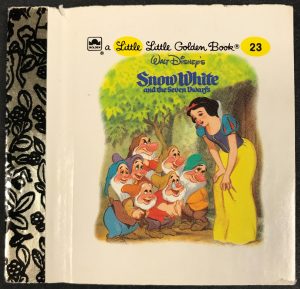
Here are two different retellings of the Grimm story “Snow White” in which the story has been simplified and the violence has been toned down. In the Grimm version, the evil queen tries to kill Snow White three times, but Disney only portrays the murder attempt with the poison apple. Disney also invented the true love’s kiss to wake Snow White. In the Grimm story, the dwarfs lift the coffin and dislodge the poisoned apple from her throat, waking her.
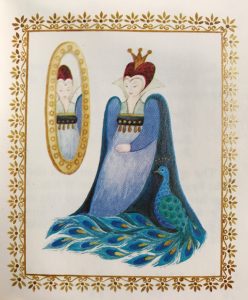
Perhaps punishment for wicked deeds is the element in the Grimm tales that is most removed from modern versions, often replaced with a happy end for everyone. At the end of the Grimm version, the wicked stepmother is forced to dance on hot coals until she falls down dead. In the Disney version, the dwarfs chase the evil queen until she falls off a cliff. In the version by Olive Jones, pictured to the right, the queen falls down with rage when the mirror tells her that Snow White is the fairest of them all. The illustrations in Olive Jones’ book also add elements of symbolism, such as the wicked stepmother’s accompaniment by a peacock, a symbol for pride.
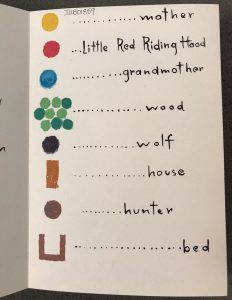
This last item is a very modern retelling of the Grimm story “Little Red Riding Hood.” It is an artist book made by Warja Honegger-Lavater. She tells the story only with abstract illustrations. Each main character or place has a symbol. For example, Little Red Riding Hood is a red dot, the wolf is a black dot, and the woods are green dots. The story stays true to the Grimm version despite its abstract nature. This is just one example of how these stories continue to be reinvented and told in new ways hundreds of years after their inception.
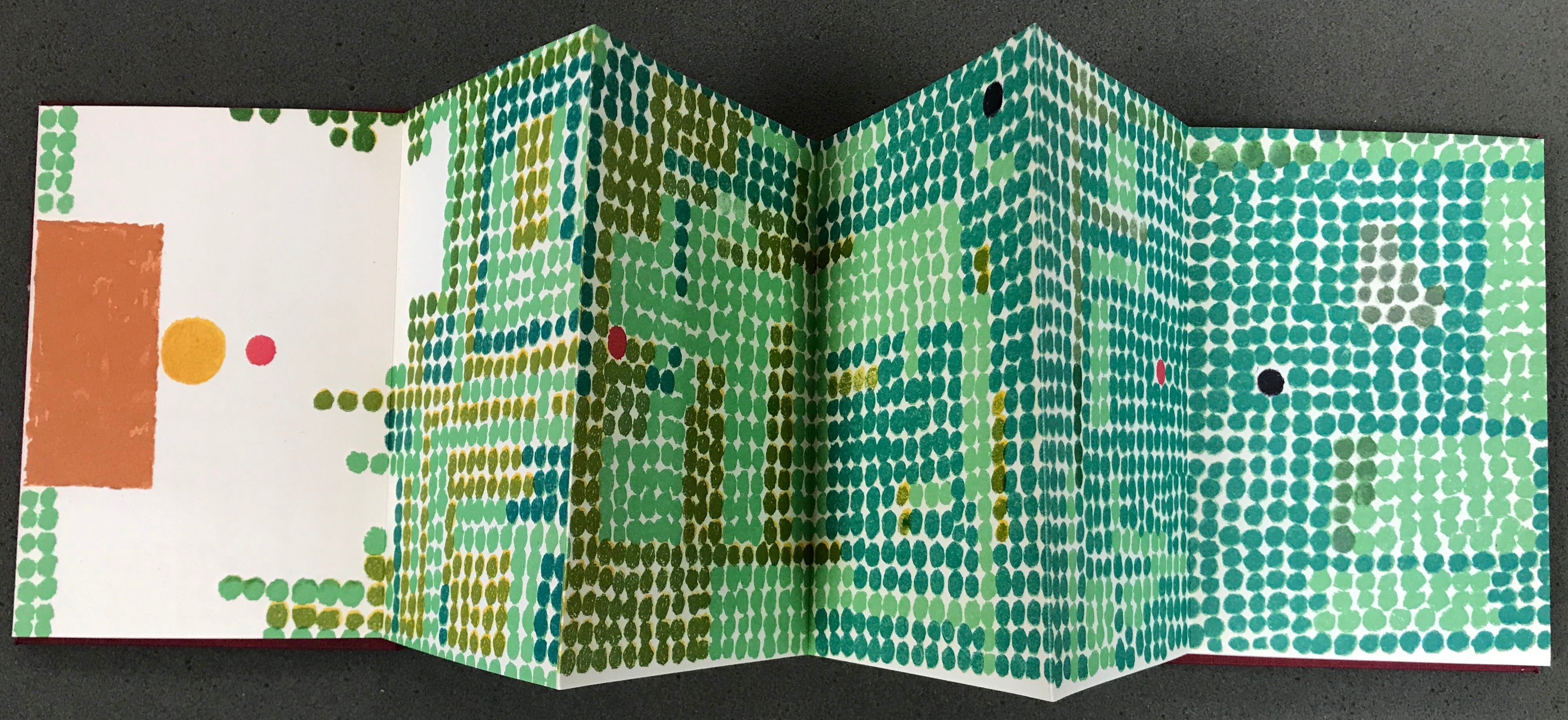
Dear Ladies and Gentlemen, I am currently writing my doctoral thesis at the University of Kassel on the Grimm fairy tales. As I have seen, your library is lucky to own the only copy of the „Kleine Ausgabe“ of 1858 in the original binding (Call number: S.398 G88K1858). It would help a lot if I could show this cover in my work. Could you please send me a high res. image of the cover?
Yours sincerely Axel Winzer
Great article, thank you so much for sharing
Is a story like in Disney inspired by existing history
Behind a funny story there is something creepy
Hi i like your post
A legend must have more than one version of the story. We don’t know which version is the most correct, each version of the story must claim the most true
Here are two different retellings of the Grimm story “Snow White” in which the story has been simplified and the violence has been toned down.